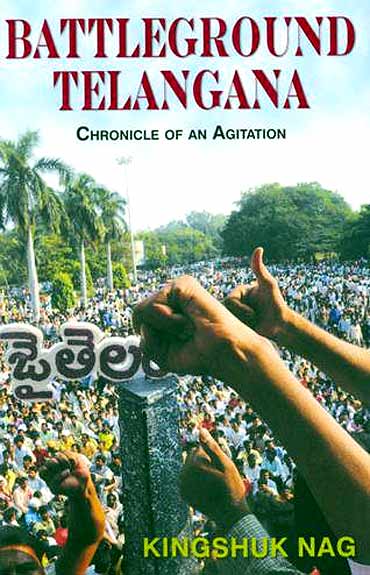
In his book, Battleground Telangana - Chronicle of an Agitation, Kingshuk Nag dwells into the recent history about the creation of Andhra Pradesh. Nag has also spoken to a wide cross section of politicians and people of the all the three regions of the southern state to unravel the complexities of the situation. T R Ramachandran reviews the book
Battleground Telangana - Chronicle of an Agitation by journalist Kingshuk Nag is a well-timed book. The movement for a separate Telangana state has received fresh impetus. It has gained a new zip and momentum at least over the past six months.
It has caught the imagination of the people of Telangana region to whip up a frenzy irrespective of the discomfiture caused to the people in the Andhra and Rayalaseema regions.
Voices against the creation of Telangana have also become more strident with demands for a united Andhra coming to the fore. However, the gentleman's promise agreed to by the leaders of Andhra and Telangana in 1956 that the people of Telangana will be given equal opportunities in terms of employment, education, development and promoting their little known Telugu culture and festivities remains unfulfilled.
Consequently, the people from Telangana find themselves literally being looked down upon by the Telugus from Andhra. This attitude has hurt the self respect and pride of those from Telangana. They entered into an agreement in the first instance being acutely aware that they were not empowered and faced a huge handicap. Efforts of the Congress leadership to have chief ministers from the Telangana region have been few and far between.
They have failed to assuage the feelings of the people of Telangana or provide a healing touch. Is there a solution to this protracted problem? It is not surprising that the author of the book and journalist Kingshuk Nag feels this burning issue remains insoluble.
...

At the core of the Telangana issue is the status of Hyderabad, the jewel of Andhra Pradesh. While the people of Telangana maintain that Hyderabad has been part of the erstwhile Nizam state and must necessarily remain with Telangana as its capital. Those from Andhra are averse to parting with it as they find no other city in Andhra Pradesh as developed and cosmopolitan as Hyderabad.
Besides, even though they might be rank outsiders in Hyderabad their contribution to the city, setting up businesses and pursuing other avocations has further accentuated the problem in the Telangana region. The youth from Telangana hardly know their region having been born and bred in Hyderabad. And that is where they belong. With sentiments running high, those from the Andhra and Rayalaseema regions are quick to mouth the sentiments of their counterparts from Telangana so that they are not singled out for special treatment. Consequently, settlers from Andhra in Hyderabad and migrants from other parts of the country have proposed an independent Hyderabad.
The late Y S Rajasekhar Reddy who died in a helicopter crash during his second term as the chief minister of Andhra Pradesh, was trying to create a mega Hyderabad city to foil the creation of Telangana state. Telangana activists are at daggers drawn when there is talk of Hyderabad being made a Union Territory.
...
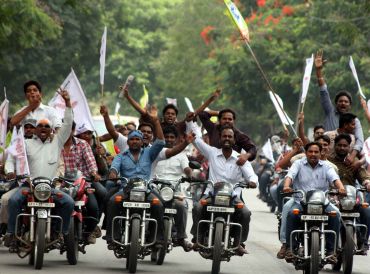
Telangana Rashtra Samiti chief K Chandrasekhar Rao dismisses the suggestion as being absurd. Significantly, Telangana's economy is largely dependent on the prosperity of Hyderabad. Without Hyderabad, Telangana which has scarce resources of its own will collapse. Some are even alluding to adopting the Hong Kong model vis-a-vis Hyderabad.
As Hyderabad is the main bone of contention, the solution could be to create Telangana and make Hyderabad a special administrative region under the new state. Hyderabad could have its own city government with a legislature and ministers. It would be incumbent on the city government to give a percentage of its revenues to the Telangana government that would have the responsibility of developing the entire state. Votaries of Telangana will be happy at the prospect because Hyderabad would continue to be under the state. Then it has been suggested that Telangana can be created as a SAR within Andhra Pradesh and made a full fledged state after a few years.
The Congress-led United Progressive Alliance government gave a categorical assurance on December 9, 2010 that Telangana will be formed but retracted a fortnight later on December 23 because of intense pressure. Once again the Congress was biding for time. The Srikrishna Committee which had been constituted with much fanfare to go into the Telangana imbroglio and submit a report raised hopes of finding a way out. However, when Justice Srikrishna submitted his report to the government it was a major disappointment.
The operative portion of the voluminous 635-page report was that the status quo should be maintained. Regional Developmental Councils should be set up for Telangana. The councils will look after planning and economic development, water and irrigation, education, local administration and public health.
The committee also noted their investigations did not show that districts in Telangana were any less developed than those in the rest of Andhra Pradesh. It also suggested that Andhra Pradesh be bifurcated into Telangana and the rest of Andhra with the proviso that Hyderabad be made into a Union Territory. This was because Hyderabad had grown enormously during the last decade and had become part of the global economy in the Information Technology sector.
If Hyderabad became a Union Territory then Telangana and Andhra will have to develop their own capitals. At the same time the committee noted a separate Telangana with Hyderabad was an option but this was not something it was keen about.
...
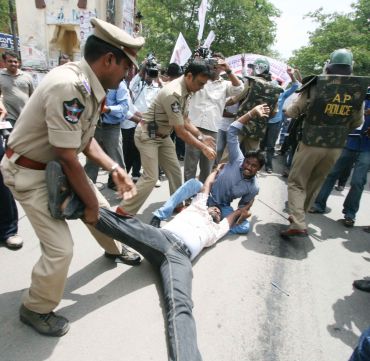
Union Home Minister P Chidambaram observed that the Srikrishna report was not the last word on Telangana. Political leaders were livid about references of Maoist forces and said this was a bogey used by the committee to deny Telangana. There is no denying that the Centre's ambivalence and flip flop attitude on Telangana has continued for an interminably long period. Leaders from Telangana and others who support the demand warn that if the government continues to dilly dally, events will take such a turn that the powers that be will have no other option but grant Telangana unconditionally without being able to do anything to protect the interests of the people from Andhra and Rayalaseema areas.
At the same time it is a fact that Maoists have their command headquarters in the jungles adjoining Dantewada in Chattisgarh, which is only 200 km from the districts of Telangana. The ultras have considerable influence in the Telangana area because of hailing from there.
Even as a large part of the elite in Hyderabad was against the creation of Vishalandhra, the country's first Prime Minister Pandit Jawaharlal Nehru called the leaders of Telangana and Andhra and asked them to agree to the rules of the game in the run up to the creation of Andhra Pradesh. A safeguard agreement was signed by the leaders of the two groups in Hyderabad house in New Delhi in February 1956.
This included setting up a separate statutory regional council for Telangana comprising MPs and MLAs to secure all-round development of Telangana. It was agreed some kind of domicile rules will be applicable for jobs and use of Urdu will continue in the administration and the judiciary for five more years. If the chief minister of the integrated state was from Andhra, the deputy chief minister should be from Telangana and vice versa.
Expenditure incurred on the administration of the state should be borne proportionately by Andhra and Rayalaseema and the income accruing from Telangana will be reserved for development of the area. It was also agreed that two out of the five portfolios of home, finance, revenue, planning and development and commerce and industry would go to ministers from the Telangana region.
On two aspects there was no agreement. This pertained to the state being called Andhra-Telangana and the Andhra region high court to be continued in Guntur rather than a common high court in Hyderabad. The Telangana leaders lost on both counts. Andhra leaders had their way. The state was christened Andhra Pradesh and the high court established in Hyderabad.
...
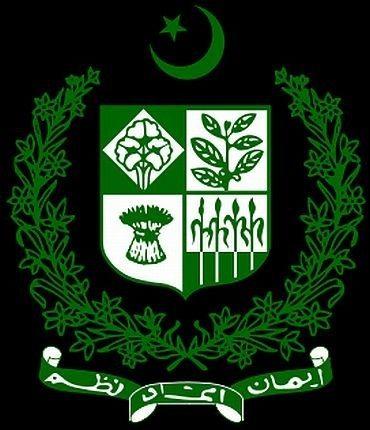
The new state came into being on November 1, 1956 and its first chief minister Neelam Sanjeeva Reddy hailing from Rayalaseema breached the gentleman's agreement. This set the tone for the acrimonious relations between the two regions and striving for a separate Telangana.
There is calculated propaganda to scuttle the formation of a separate Telangana state. There is the constant bogey by the proponents of united Andhra that a separate Telangana has the danger of becoming a Maoist infested area. Then there is also the alleged spectre of Pakistan's all powerful Inter-Services Intelligence having a free run in Telangana. The pro-Andhra lobby argues that as Telangana will be a small, soft state like Jharkhand, ISI agents will become all powerful.
The ISI already has sleeper cells in the old city of Hyderabad. Then there are strategic installations and defence and scientific institutions like the Nuclear Fuel Complex. The film industry in Andhra Pradesh which produces more films than Bollywood is totally controlled by Andhraites. Clearly, there are no easy answers to a host of questions raised by the leaders of Telangana as the positions have hardened so much on both the sides.
Kingshuk Nag has not only dwelt into the recent history about the creation of Andhra Pradesh but has spoken to a wide cross section of politicians and people of the all the three regions of the southern state to unravel the complexities of the situation. He has gone into when the first agitation began, drawn pointed attention to the paradigm shift in the stand of the late NTR, N Chandrababu Naidu and Y S Rajasekhar Reddy.
The strategy of the TRS and the electoral battle for Telangana coupled with the UPA government taking a complete "u" turn in a fortnight after announcing the creation of Telangana amid much fanfare was yet another example of the ham handed manner in which the Congress handles explosive situations.
The author has also gone into the caste equations and the now familiar manoeuvering by political parties seeking to secure maximum political gains for themselves rather than adopting a principled stand. Then it is not surprising that the upper castes of Reddys and Kammas are ruling the roost in Andhra Pradesh even though they are numerically far less compared to the backward and other castes in Andhra Pradesh.
...
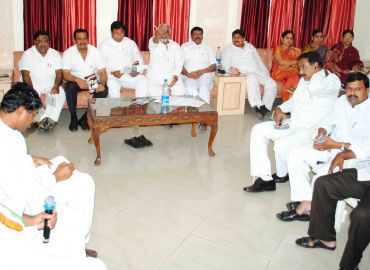
Their numbers like the Kapus constituting 33 per cent of the population are way ahead compared to the Reddys and Kammas but compelled to play the role of junior partners to the Congress and the TDP. This is essentially on account of these backward castes neither being economically powerful or educationally empowered. Well known film star Chiranjeevi is a Kapu who has merged his party with the Congress.
Will the Centre be opening a Pandora's box if it agrees to creating the new state of Telangana. Interestingly, there are no less than seven serious demands for the creation of new states with the government having put these files on the backburner.
They include creation of Gorkhaland, Vidarbha, Bundelkhand and Harit Pradesh and others. Importantly, the break up of Andhra Pradesh will violate the principle on which the Indian states were reorganised in 1956 on linguistic lines. Andhra and Hyderabad were merged together on the basis of a common language spoken across the region. If language was the basis for creating new states in 1956 then some other parameters will have to be evolved to deal with the growing demand for smaller states. This will otherwise lead to an endless demand for division of states into smaller units on one pretext or another.
The struggle for dividing Andhra Pradesh and securing a separate state of Telangana has been a long drawn one. This has remained since the formation of Andhra Pradesh minus the Madras state more than five-and-a-half decades back. Creation of Andhra Pradesh might have lingered for a while longer had it not been for Gandhian Potti Sreeramulu undertaking an indefinite fast in October 1952.
A trained sanitary engineer Potti had grown up in Madras even though his family hailed from Nellore. Nehru had taken note of Potti's fast but realised the latter's determination at a stage when it had become too late. Potti breathed his last in December 1952 after fasting for 58 days. Four days after Potti's death on December 19, 1952, Nehru announced the creation of Andhra immediately. Initially Nehru did not think creation of Andhra is a great idea as it will be backward and financially hard up.
The day Andhra Pradesh came into being, the leaders started eyeing Hyderabad as its capital as a manifestation for creating a unified Telugu state aimed at restoring the glorious days of the Telugu kingdom. The book indeed goes into the genesis of the festering Telangana problem which is by no means near resolution any time soon. Or is it?